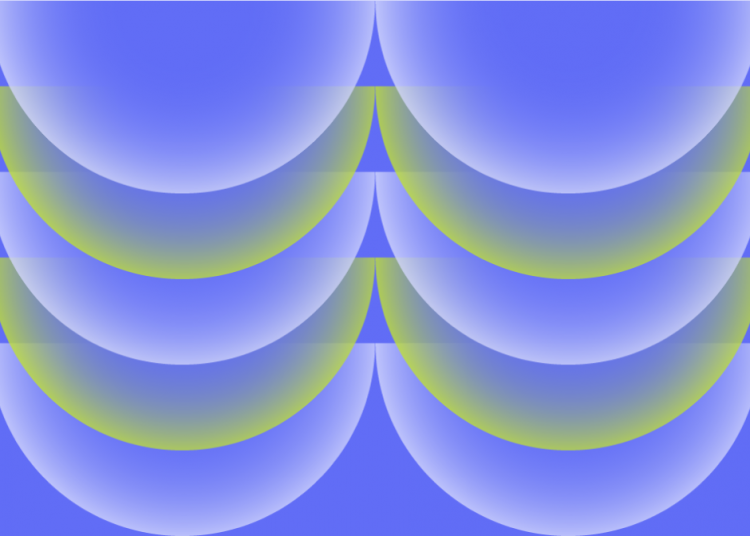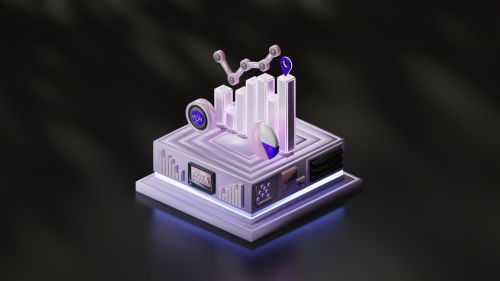A large sterilized room with a single bed in the center. Sol breathes slowly as peaceful melodies sedate his few remaining thoughts. There isn’t much time left. Soon he will cease to think and breathe altogether. Images of a nature he has never seen appear on the screens that surround him: trees, flowers and the ocean. This is the moment the 60-year-old has been waiting for.
Crystal blue waters and green pastures decorated with the radiant colours and smells of flowers surrounded by the gentle humming of bees only exist in books. Books, hidden away in secret libraries because they were written before the climate collapse. Now that Sol’s time had arrived to take the mandatory potion and leave this earth, his request to see nature had been granted.

This is a scene from the ecological dystopian movie Soylent Green. It depicts a world destroyed by the greenhouse effect and its consequences. Severe heat and pollution caused nature to disappear, leading to an acute shortage of food. People are put to death upon reaching a certain age and their bodies are recycled into nutrition. The year is 2022.
Thankfully, the reality isn’t as gruesome as Richard Fleischer envisioned it in 1973. But his film shows that climate concerns have troubled humanity for over 50 years already.
What are we doing about it today and how can blockchain make an impact? That’s what this article is about to explore.
The global climate tech market – a $2.7 trillion opportunity
Scientists have put their heads together to find alternative energy solutions for decades. By now, wind turbines are a familiar sight in many areas of the world. However, they generate a mere 6.5% of all the energy produced worldwide. Solar energy makes up about 4% of the world’s total electricity. To reach the Net Zero Emission goal by 2050, an average growth of 25% is necessary.We are all growing more concerned and trying to act more responsibly as climate-change-related symptoms become more obvious. However, global energy consumption is expected to rise by almost 50% by 2050 and carbon emissions are still on the rise, although at a lower rate.

It’s clear that governments and private companies need to keep investing heavily in green tech with a focus on finding new solutions to tackle the challenges.
In 2022, the global climate tech market reached $1.2 trillion and is expected to grow to $2.7 trillion by 2030. According to a study by McKinsey & Company, the global climate technology sector could attract $1.5 trillion to $2 trillion of capital investment per year by 2025 with an aim to abate 40% of greenhouse-gas emissions by 2050.

Companies and governments are trying to address the environmental crises from various angles. Over the past two years, the focus has moved from energy generation to pollution reduction. Electric vehicles, EV batteries and renewable energy have been the strongest sectors of green tech. However, there are some newcomers that are thriving in the background: carbon capture and storage, climate FinTech and biomass are the most notable.
Innovative financing is a core need for climate tech development
One challenge in this industry is that the profit horizon is low. It’s a bit like going on a diet. There’s little to no immediate benefit and it doesn’t satisfy any of your immediate needs. But if you don’t invest in it, you’ll suffer or die. Same with sustainability, energy saving and greenhouse gas reduction. We need to invest in them for humanity and the planet to survive, not to get rich, have fun, or advance.

Reaching sustainability goals requires a mutual effort and collaboration between individuals, communities, governments, and companies. There’s mutual benefit, but little financial incentive for the individual entities involved.
This got blockchain experts thinking – well, it’s one of the issues – because a technology that creates digital value might have solutions for this challenge. Blockchain could play a major role in financing climate-related projects. Additionally, the technology canbe used to monitor, verify, and manage climate and sustainability-related data.
Greenwashing and fraud: the dark side of climate financing
For many industries the demand to reduce pollution and go green is a costly burden. This has produced a nasty side effect: greenwashing. Companies bluff instead of taking action. They provide the public and investors with false data about their environmental impact to avoid expenses. The practice includes manipulating numbers and clever marketing tactics. According to Quilter Investors, a staggering 44% of all ESG efforts are likely to be pure greenwashing.
But consumers are getting smart and demand reliable data. Now, all we need is a system that ensures the data is correct, accurate and can’t be tampered with – a case for blockchain. Data entered in the blockchain can’t be manipulated and is traceable. The technology can be used to record, map, and track sustainability data and could set an end to some dangerous greenwashing methods.
How blockchain enables climate action
- Environmental concerns – blockchain can
- Provide a transparent and reliable system for measuring and tracking energy generation and consumption, as well as other sustainability parameters.
- Fund environmental and conservation projects through tokenization and digital assets.
- Energy generation and distribution – blockchain can
- Reduce energy waste through P2P trading of surplus or unused energy
- Enable consumers to proactively choose an alternative energy provider
- Improve demand-side energy efficiency through real-time coordination of electricity demand and supply data
- Regulations – blockchain can
- Ensure clean, tamper-proof data to assess compliance with environmental and sustainability regulations
Let’s look at some specific areas in which blockchain applications are already implemented in green activities.
Carbon credits
A Carbon Credit is a permit which allows an organization or country to produce a set amount of carbon emissions or other greenhouse gasses. These credits are granted by governments or independent, authorized certification bodies.
The number of credits is reduced each year as an incentive to lower carbon emissions. A credit holder can sell surplus credits to another company, or buy additional credits if their emission is higher. This mechanism ensures overall reduction over time.
The advantage of using blockchain technology in carbon credit exchanges is that it eliminates greenwashing. With common digital financial tracking, bad players in any industry or intermediaries with self-interest could manipulate credit-related data for profit. The immutable ledger technology creates a traceable financial system that can’t be forged. This is critical to achieving the goal of reducing greenhouse gas pollution.
Several blockchain-based carbon credits or carbon offset apps are already successfully operating in the world.
Examples
KlimaDAO – The project generates tokenized carbon credits in the form of the native KLIMA token incentivizing projects and entrepreneurs to make a profit while reducing their carbon footprint.
CarbonKerma – Offers carbon offsetting and converting captured CO2 Into commodity-backed digital assets
Climatetrade – A marketplace for carbon, plastic, and biodiversity credits for businesses and organizations.
Data tracking
For the same reason, blockchain is valuable in tracking carbon credits, it can be useful in tracking data in general. By combining blockchain technology with IoT (Internet of Things) and sensors, you can verify the authenticity of tracked environmental data.
Existing apps measure and track a variety of data such as
- Sustainability in supply chains
- Energy consumption
- The carbon footprint of a company
- ESG ((Environmental, Social and Governance) related data
- Other regulatory compliance data
- Water and air quality
- Farmland quality
- Environmental risk factors
Examples
FlexiDAO – The application tracks data using IoT (sensor data) and monitors environmental risk factors, performance and compliance. Companies can also trace where their electricity comes from and what their true carbon emission is. In addition, the company offers sustainability loans and bonds.
Diginex – The company offers products for fast and easy ESG management. The company develops blockchain apps to be used by the United Nations.
NFTs
This may come as a surprise to environmentally conscious people, but NFTs promise to be a lot more than a fancy fad of wealthy celebs. NFTs are digital representations of value and can be used to incentivize investments and funding.
Here’s an example: You purchase an NFT and the money goes to a conservation project. It might represent ownership of a tree or animal and also has its own intrinsic value. Using the blockchain’s immutable ledger technology ensures transparency, so you can be sure the money is used for its intended purpose.
And it doesn’t stop there. Utility NFTs are programmed with a purpose. This means you get a real-world benefit, like a free entrance ticket into the national park you donated to. You might get voting rights in the environmental project you support.
An NFT can also function as a certificate. Companies use NFT technology to provide proof of funding, achieving sustainability goals, or complying with standards.
Examples
Treejer – The project connects tree planters with funders. The planter receives the funding to plant and grow a tree and the funder receives an NFT and can track the growths of the actual tree.
Plastiks – Helps companies build and implement or take part in plastic recovery projects. Offers NFTs as proof of execution and achieving a set goal. Ecosapiens – Offers carbon-backed collectables that directly finance carbon removal projects.
P2P energy trading
Blockchain-based applications allow individuals, communities, and companies to trade in renewable energy. These platforms offer various methods to buy and sell unused energy or choose a specific alternative energy provider. This eliminates the need for intermediaries and lowers the amount of energy going to waste. It increases the efficiency of energy use and lowers the cost for consumers and providers.
Examples
Power Ledger – The platform offers solutions for energy and commodity trading for energy retailers, companies and communities. Their clients include renewable energy providers in Europe, Asia, Africa, and the Americas
Suncontract – A marketplace for P2P energy trading, including consumers and providers. The platform helps to increase efficiency in energy use and lower costs for either side.
Fraud-proof technology for a green future
These are only a few areas where blockchain technology is advancing sustainability. The benefit for the planet and for the individual may be obvious. No one wants to end up like the 60-year-old who sees nature for the first time on screen as he lies on his deathbed.
But you may ask yourself, what do businesses have to gain from this? Customer demand drives revenue. And customers demand more environmentally responsible production and business conduct. They want to know which ingredients are used in the product they buy and how they were produced.
Brands that can provide proof that they adhere to ESG standards are often the preferred choice. Even though companies don’t gain a direct benefit, being able to produce data as proof of compliance increases their chances of more sales and customer loyalty. Again, only immutable ledger technology ensures the authenticity of the data and can provide actual proof.
A lot of work is necessary to sustain nature and a healthy living environment for humans on Earth. And it needs the initiative of individuals and pressure from consumers to keep moving in that direction. To support these efforts, technology must be fraud-proof. It must also operate independently of any powerful entity in which the need to sustain its market position outweighs concern for the common good. Blockchain fulfils these conditions.




